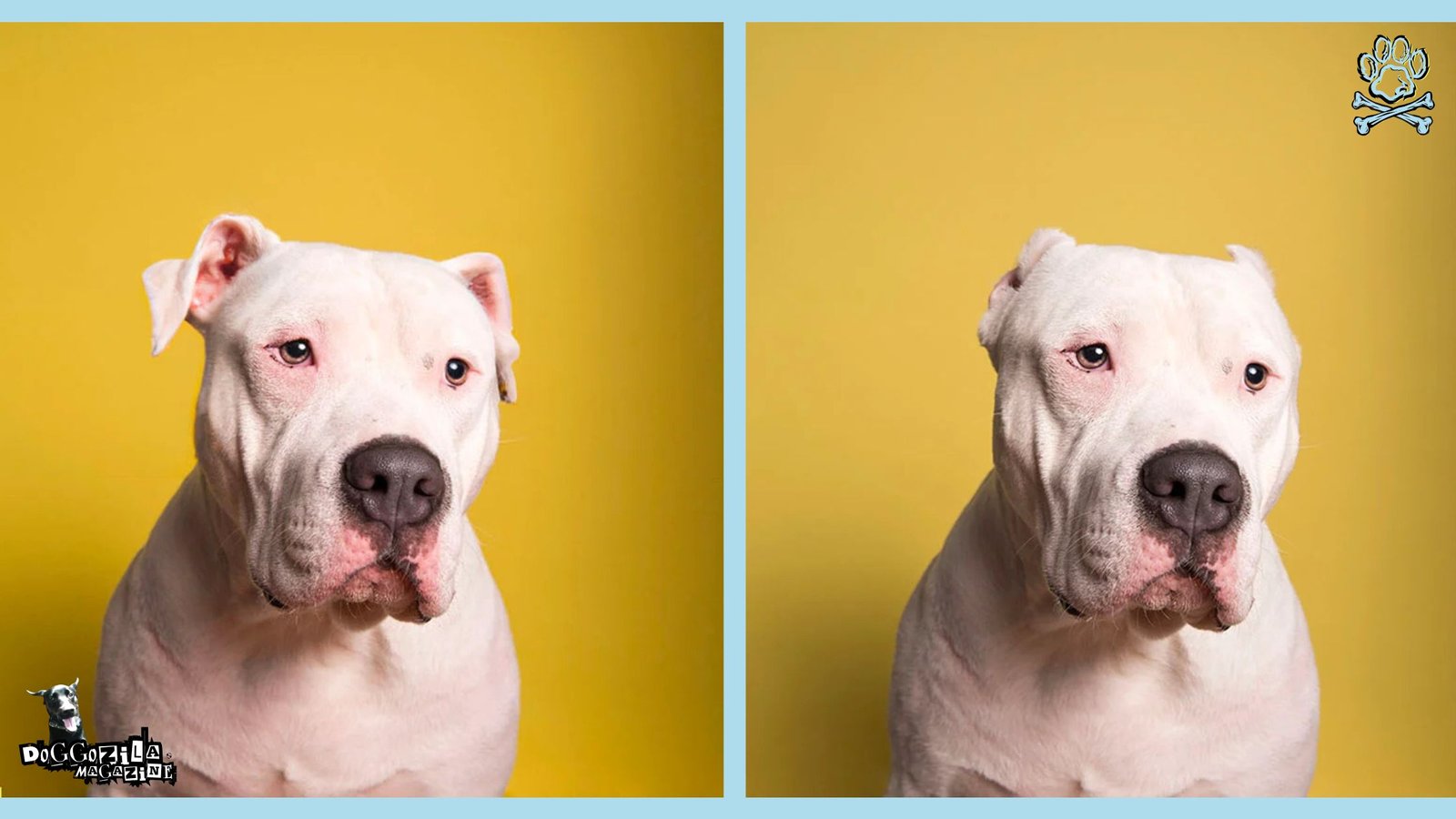Dogs are known for their expressive body language, which includes their tail wagging, the way they hold their posture, and the positioning of their ears. This comprehensive article covers various aspects of why do dogs pull their ears back, emphasizing the importance of understanding canine body language. It is designed to provide valuable information to dog owners, helping them better interpret their dog’s behavior and improve their communication.

OBSERVING WHY DOGS PULL THEIR EARS BACK
One common behavior that dog owners often observe is dogs pulling their ears backward. This ear movement can signify a range of emotions and reactions, from fear and anxiety to friendliness and submission. Let’s delve into the reasons why dogs pull their ears backward, explore what this behavior can indicate, and provide tips on how to understand and respond to your dog’s body language effectively.
The Anatomy of a Dog’s Ears: How They Communicate
Before exploring why dogs pull their ears backward, it’s important to understand the anatomy of a dog’s ears and how they function in communication. Dogs have highly mobile ears controlled by several muscles that allow them to tilt, rotate, and pull their ears back. These movements are not just for hearing; they are also a vital part of a dog’s body language and communication.
🔑 Key Points: Dogs have over a dozen muscles dedicated to moving their ears, allowing them to express various emotions.Ear movements help dogs communicate with other dogs and humans, conveying emotions like happiness, fear, curiosity, and aggression. A dog’s ear position can provide insight into their mood and intentions, much like a human’s facial expressions.

EMOTIONAL SIGNALS: WHAT DOES IT MEAN WHEN DOGS PULL THEIR EARS BACK?
Dogs pull their ears backward for several reasons, primarily related to their emotional state.
Here are some common reasons why dogs might pull their ears back:
Fear or Anxiety
One of the most common reasons dogs pull their ears back is due to fear or anxiety. When a dog feels threatened or scared, they may flatten their ears against their head as a way to protect themselves. This behavior can be accompanied by other signs of fear, such as cowering, tucking their tail, or avoiding eye contact.
Indicators of Fear or Anxiety
- Ears flattened against the head
- Wide eyes with visible whites (whale eyes)
- Cowering or low posture
- Trembling or shaking
- Tail tucked between the legs
- Whining or whimpering
Submission
Dogs may also pull their ears back as a sign of submission, especially when interacting with other dogs or people. This behavior indicates that the dog does not want to appear threatening and is acknowledging the other as being more dominant. Submissive ear positions are often seen during greetings or when a dog is being scolded.
Indicators of Submission
- Ears pulled back slightly or held close to the head
- Avoiding direct eye contact
- Licking the lips or licking the dominant dog/person’s face
- Rolling over to expose the belly
- Lowered body posture
Happiness and Contentment
Interestingly, dogs can also pull their ears back when they are happy and content. In this context, the backward ear position is often accompanied by a relaxed body posture, wagging tail, and soft eyes. This behavior is commonly seen when dogs are being petted or cuddled by their owners.
Indicators of Happiness and Contentment
- Ears pulled back but relaxed, not flattened
- Loose, relaxed body posture
- Soft, half-closed eyes
- Tail wagging gently
- Playful behavior
Curiosity or Alertness
Sometimes, dogs pull their ears back when they are curious or alert to a new sound or situation. This ear movement allows them to better capture and locate sounds. A curious dog may also tilt its head and have its ears slightly back while trying to figure out what is happening.
Indicators of Curiosity or Alertness
- Ears pulled back slightly or to the sides
- Head tilt
- Eyes wide open, focused on the source of the sound or object of interest
- Tail may be held still or wagging slowly
- Nose sniffing
Context Matters: Understanding the Bigger Picture
To accurately interpret why dogs pull their ears back, it’s essential to consider the overall context and other body language cues. Dogs communicate using a combination of signals, so relying solely on ear position can lead to misunderstandings.
Here are some factors to consider:
- Body Posture: A dog’s body posture can provide significant clues about their emotional state. For example, a dog with its ears back, but standing tall with a wagging tail, is likely happy and relaxed. In contrast, a dog with ears back, a lowered body posture, and a tucked tail is likely fearful or submissive.
- Tail Position and Movement: The tail is another crucial indicator of a dog’s mood. A wagging tail does not always mean a dog is happy; the speed and position of the tail wag can convey different emotions. A slow, low wag might indicate uncertainty or fear, while a high, fast wag can indicate excitement or aggression.
- Facial Expression: Dogs use their facial muscles to express emotions. A relaxed face with soft eyes and a slightly open mouth usually indicates a relaxed and content dog. On the other hand, a tense face with a closed mouth, raised eyebrows, and wide eyes might indicate fear or aggression.
- Vocalizations: Dogs often use vocalizations to communicate their feelings. Whining, barking, growling, or howling can accompany ear movements and provide additional context to a dog’s emotional state.
🔑 Key Points: Dogs pull their ears back primarily related to their emotional state. The main ones are curiosity or alertness, happiness and contentment, submission and fear or anxiety. Remember that it’s essential to consider the overall context and other body language cues that comes when they make the ear movements.

READING YOUR DOG’S BODY LANGUAGE: PRACTICAL TIPS FOR DOG OWNERS
Understanding your dog’s body language can help you respond appropriately to their needs and emotions. We prepare some practical tips for dog owners to read and interpret their dog’s ear movements and overall body language.
Observe the Whole Dog
When trying to understand what your dog’s ear position means, look at their entire body, not just the ears. Consider their tail position, body posture, facial expressions, and any vocalizations. This holistic approach will give you a better understanding of your dog’s emotions and intentions.
- Consider the Environment: The environment and situation can influence a dog’s behavior and body language. For example, a dog may pull its ears back if it’s in an unfamiliar or stressful environment, such as a vet’s office or a crowded park. Consider what is happening around your dog and how it might be affecting their behavior.
- Know Your Dog’s Personality: Every dog is unique, and individual personalities can influence how they express themselves. Some dogs are naturally more submissive and may pull their ears back more frequently, while others are more confident and rarely show submissive behaviors. Knowing your dog’s personality can help you interpret their body language more accurately.
- Watch for Changes in Behavior: Sudden changes in your dog’s ear position and overall behavior can indicate that something is wrong. If your normally relaxed and happy dog starts pulling their ears back frequently, it could be a sign of stress, fear, or even pain. Pay attention to changes in behavior and consult with a veterinarian if you are concerned.
How to Respond to Dogs When They Pull Their Ears Back
Knowing how to respond to your dog’s ear positions can improve your communication and strengthen your bond.
Here’s how you can respond effectively:
- Comfort and Reassure: If your dog pull its ears back due to fear or anxiety, provide comfort and reassurance. Speak to them in a calm, soothing voice and offer gentle petting or a favorite toy. Avoid forcing interactions or placing them in situations that cause stress.
- Respect Their Space: When a dog pulls its ears back in a submissive gesture, respect their space and avoid actions that might be perceived as threatening. Give them time to approach you or other dogs on their own terms. Avoid direct eye contact, as this can be seen as a challenge by some dogs.
- Positive Reinforcement: Use positive reinforcement to encourage relaxed and confident behavior. Reward your dog with treats, praise, and affection when they exhibit calm and relaxed body language. This will help them associate positive experiences with being relaxed and comfortable.
- Training and Socialization: Proper training and socialization can help reduce fear and anxiety in dogs. Expose your dog to various environments, people, and other animals in a controlled and positive manner. Training your dog to respond to commands can also improve their confidence and reduce stress in new situations.
- Consult a Professional: If your dog frequently pulls its ears back and exhibits signs of fear, anxiety, or aggression, consider consulting a professional dog trainer or behaviorist. They can help identify the underlying causes of your dog’s behavior and provide guidance on how to address it effectively.

Common Misconceptions About Dogs That Pull Their Ears Back
There are several misconceptions about dogs pulling their ears back.
Here are some common myths and the truths behind them:
Myth:
Dogs Pull Their Ears Back Only When They Are Afraid
Truth:
While fear is a common reason for dogs to pull their ears back, it is not the only reason. Dogs may pull their ears back due to submission, happiness, curiosity, or alertness. It is important to consider the overall context and other body language cues.
Myth:
A Dog with Ears Pulled Back is Always Submissive
Truth:
While pulling their ears back can be a sign of submission, it can also indicate other emotions such as fear, happiness, or curiosity. A dog’s ear position should be interpreted in conjunction with other body language signals.
Myth:
Ears Pulled Back Mean the Dog is in Pain
Truth:
Although dogs may pull their ears back when they are in pain, this behavior can also indicate a variety of emotions. If you suspect your dog is in pain, look for other signs such as limping, whimpering, reduced appetite, or reluctance to move. If these signs are present, a visit to the veterinarian is advisable to rule out any health issues.
🔑 Key Points: Understanding your dog’s body language will help you to respond appropriately to their needs and emotions. Always observe their entire body, not just the ears. Knowing the meaning of your dog’s movements will make your bond stronger as you will understand always what he have to say.

HEALTH CONCERNS RELATED TO EAR POSITIONING
While ear positioning is largely a behavioral signal, there are health conditions that can affect a dog’s ears and may influence their ear posture. Being aware of these potential issues is important for dog owners.
Dogs Can Pull Their Ears Back from Ear Infections
Ear infections are common in dogs, especially those with floppy ears or dogs that swim frequently. Infections can cause pain, irritation, and inflammation, leading a dog to pull their ears back.
Signs of ear infections include:
- Frequent scratching of the ears
- Redness or swelling in the ear canal
- Unpleasant odor from the ears
- Discharge or fluid from the ears
- Sensitivity or pain when the ears are touched
If you notice these signs, consult your veterinarian. Treatment typically involves cleaning the ears and administering medicated drops or ointments.
Ear Mites Can Make Dogs to Pull Their Ears Back
Ear mites are tiny parasites that live in the ear canal and can cause intense itching and discomfort. Dogs infested with ear mites may pull their ears back, shake their head, or scratch their ears excessively. A dark, crumbly substance resembling coffee grounds in the ear canal is a common sign of ear mites. Veterinary treatment is necessary to eliminate the mites and alleviate the dog’s discomfort.
Dogs Pull Their Ears Back When Start to Lose Their Hearing
Hearing loss in dogs, especially older dogs, may also cause changes in ear posture. A dog experiencing hearing loss may become more reliant on visual and olfactory cues, and this can influence how they hold their ears.
If you suspect your dog is losing their hearing, look for signs such as:
- Not responding to commands or their name
- Being easily startled
- Excessive barking
- Not waking up to loud noises
Consulting a veterinarian can help diagnose and manage hearing loss in dogs.
Allergies Can Make Dogs to Pull Their Ears Back
Allergies can cause inflammation and itching in the ears, leading dogs to pull their ears back. Common allergens include pollen, dust mites, certain foods, and flea bites.
If your dog has allergies, they may also exhibit symptoms such as:
- Scratching or biting at their skin
- Red, inflamed skin
- Excessive licking of paws
- Chronic ear infections
A veterinarian can help identify the specific allergens and recommend appropriate treatment to alleviate the symptoms.
🔑 Key Points: Being aware of the potential health issues that make dogs to pull their ears back is important for all dog owners. Most common reasons are ear infections, ear mites, allergic reactions and loss of hearing.

BREEDS AND EAR POSTURES: IS THERE A DIFFERENCE?
Different dog breeds have distinct ear shapes and sizes, which can affect how they use their ears for communication. Understanding breed-specific ear postures can help interpret a dog’s body language more accurately.
Floppy-Eared Breeds
Breeds like Beagles, Cocker Spaniels, and Basset Hounds have floppy ears that may not show as much movement as breeds with erect ears. These breeds still use their ear positions to communicate, but their expressions might be subtler. Look for other body language signals such as tail movement, facial expressions, and body posture to understand their emotions.
Erect-Eared Breeds
Breeds such as German Shepherds, Doberman Pinschers, and Siberian Huskies have erect ears that can move independently. These breeds often use their ears prominently to convey emotions and intentions. Erect ears pointing forward can indicate alertness or aggression, while ears pulled back can signify fear, submission, or happiness, depending on the context.
Cropped Ears
Some dog breeds undergo ear cropping, a procedure where part of the ear is surgically removed to create an erect appearance. Cropping can alter a dog’s natural ear movements and may limit their ability to express certain emotions. Understanding the breed’s natural tendencies and observing other body language cues are important when interpreting ear positions in cropped-ear breeds.
Prick-Eared Breeds
Breeds with prick ears, like Chihuahuas, Corgis, and West Highland Terriers, have naturally upright ears that can easily show movement. These dogs may use their ears to express curiosity, fear, or alertness more obviously than floppy-eared breeds. Paying attention to the angle and movement of their ears can provide insights into their emotional state.
🔑 Key Points: Understanding breed-specific ear postures can help interpret a dog’s body language more accurately. Remember that all dog breeds have different ear shapes and sizes. There are floppy eared, erect eared, cropped and prick eared dog breeds.

ENHANCING COMMUNICATION WITH YOUR DOG
Understanding why dogs pull their ears back is an important part of building a strong bond with your pet. By paying attention to their ear movements and overall body language, you can improve your communication and respond more effectively to their needs.
Practice Active Observation and Use Positive Reinforcement
Spend time observing your dog in different situations to learn how they use their ears to communicate. Take note of their ear positions when they are happy, scared, excited, or relaxed. This practice will help you become more attuned to their body language.
Reinforce positive behaviors by rewarding your dog when they exhibit calm and relaxed body language. Positive reinforcement can include treats, praise, or affection. This approach helps create a positive association with relaxed behavior and encourages your dog to feel more at ease.
Build Trust and Learn about Canine Behavior
Building trust with your dog is essential for effective communication. Be consistent in your interactions, provide a safe and nurturing environment, and avoid using harsh or punitive methods. A trusting relationship will make your dog more likely to communicate openly with you.
Educate yourself about canine behavior and body language. Books, online resources, and professional training courses can provide valuable insights into understanding your dog’s communication methods. Knowledge of canine behavior will help you better interpret your dog’s ear movements and respond appropriately.
A Quick Summary to Understand Why Do Dogs Pull Their Ears Back
Dogs use their ears as a vital part of their communication repertoire. Understanding why dogs pull their ears back can provide valuable insights into their emotional state, whether it’s fear, submission, happiness, or curiosity. By observing the context and other body language cues, dog owners can accurately interpret their dog’s ear positions and respond in ways that meet their needs and strengthen the human-canine bond.
Remember, each dog is unique, and their communication style may vary. By taking the time to understand your dog’s individual behaviors and signals, you can enhance your relationship, ensure their well-being, and create a happy and harmonious environment for both you and your furry friend. As dog owners we must do everything to understand what our dogs are saying to us!
The topics of dog behavior and communication are really large. That is why we recommend a certain book about this issue!
The book is called:
The Language Of Dogs – Understanding Canine Body Language and Other Communication Signals
Get this book by clicking on the book covers or just click HERE!
If you are interested in searching other dog books, we recommend to visit our partners at Dogwise! They have books, DVD’s and CD’s, Audiobooks, ebooks and other formats on all dog topics!











